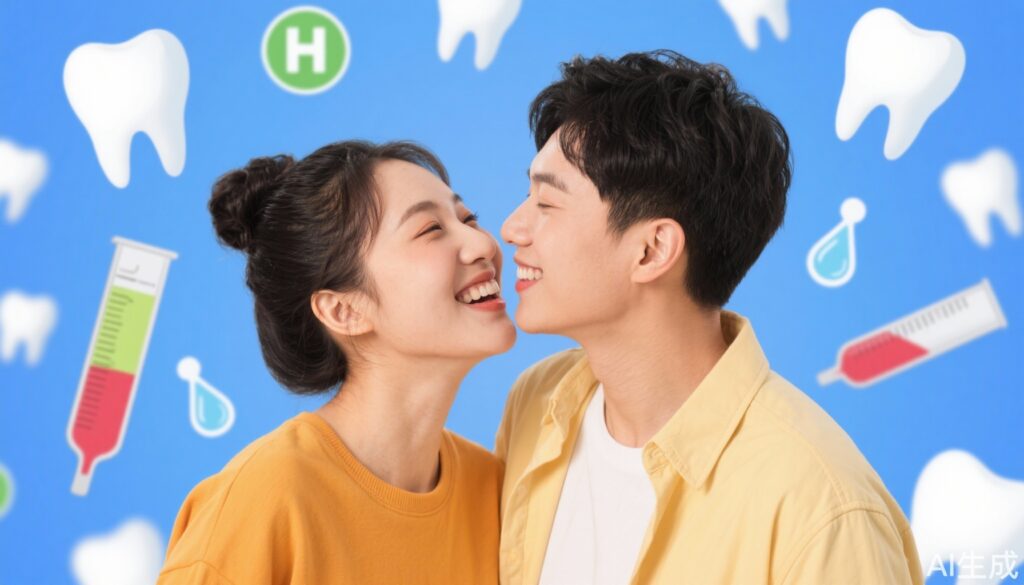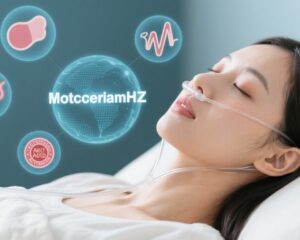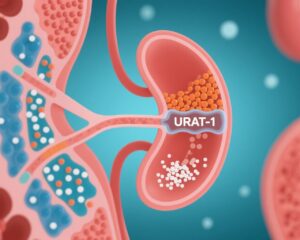Introduction: The Sweet and Sour Science of Kissing and Oral Health
Studies have shown that after consuming cariogenic food or drink, the salivary pH decreases significantly within the first 5 minutes and may take up to 60 minutes to return to baseline levels. Another study indicates that the intraoral pH drops after drinking acidic beverages and that it takes approximately 20-30 minutes for the saliva to neutralize any residual acid.
Several studies have demonstrated that common beverages, such as carbonated soft drinks, fruit-based juices, and coffee, cause an immediate and notable drop in salivary pH after ingestion. For instance, the salivary pH dropped from a baseline of 7.18 to 5.65 immediately after consuming a cola-based soft drink, and from 7.05 to 6.08 following the intake of a mango-flavored juice, both requiring up to 15 minutes to return to baseline values. Coffee, although less acidic than sodas, also reduced salivary pH from 7.05 to 6.10. These changes, even if transient, can become harmful when acidic drinks are consumed repeatedly throughout the day.
Kissing is a universal expression of affection, bonding, and intimacy. Beyond its romantic and cultural significance, kissing may also have intriguing effects on our physiology, including how it impacts the health of our mouths. Teeth and gums are constantly challenged by the foods and drinks we consume, especially sugary and fermented beverages that can lower the pH in our mouths. This acidic environment promotes the growth of bacteria that cause dental caries (commonly known as cavities). But could a simple kiss help tip the pH scale back toward neutrality, potentially offering a new, unexpected way to care for oral health?
What Is Salivary pH and Why Does It Matter?
Saliva plays a critical role in protecting our teeth. It helps wash away food particles, neutralizes acids, and provides minerals to repair early tooth decay. The pH level of saliva—how acidic or alkaline it is—can fluctuate throughout the day, primarily influenced by what we eat or drink. When we consume sugary or fermented beverages, salivary pH drops, making the environment hospitable for acid-producing bacteria that erode tooth enamel and lead to caries.
Getting saliva back to a neutral or slightly alkaline pH quickly is important to minimize damage. Traditional oral hygiene practices like brushing, flossing, and rinsing with water help; however, what if an everyday affectionate act like kissing also contributed to accelerating this process?
The Science Behind Kissing and Oral Health
Previous research has linked kissing with various health benefits such as stress reduction and relationship satisfaction. Physiologically, kissing can stimulate saliva flow, which theoretically might help raise the salivary pH after acidification caused by dietary sugars.
However, the direct effects of kissing on salivary pH recovery have not been well studied. In particular, scientists are curious whether kissing can actively promote the return of saliva to a safer pH range after consuming drinks like soda, juice, or fermented beverages that threaten dental health.
The Ongoing Clinical Trial: How Researchers Are Investigating This Question
A randomized controlled trial led by Armijos Briones M, Aguila Gaibor M, and Bermúdez Velásquez A at the Catholic University of Santiago de Guayaquil is currently underway to answer this intriguing question. The study is registered under ClinicalTrials.gov NCT06501729 and has ethical approval.
Here’s how the trial is designed:
– Participants: 60 couples aged 18-30 years.
– Groups:
– Control group with no kissing after beverage consumption.
– Experimental group where only one partner consumes a drink and then kisses.
– Experimental group where both partners consume the beverage before kissing.
– Procedure: Researchers measure salivary pH at baseline, post beverage consumption, and after a 40-second kiss or equivalent control period.
– Measurements are taken every 5 minutes until saliva pH returns to neutral.
– Data analysis will compare pH recovery time and patterns across groups.
This methodical approach is intended to see whether kissing can accelerate neutralization of acid in saliva, which if proven, would open new perspectives on oral hygiene and interpersonal health behaviors.
Why Could Kissing Influence Salivary pH?
When we kiss, several biological responses occur:
– Increased saliva production: Kissing stimulates salivary glands, boosting the overall volume of saliva in the mouth.
– Saliva dilution: More saliva dilutes acids and sugars lingering in the oral cavity.
– Possibly different microbiota exchange: Sharing oral bacteria might influence mouth flora in ways still being explored.
All these effects could help rapidly restore a safer pH balance, reducing the window during which teeth are vulnerable to acid damage.
Common Misconceptions about Kissing and Oral Health
Many people might worry about the risks of transmitting bacteria through kissing, which can contribute to cavities or bad breath. While it’s true that saliva exchange can share some bacteria, the impact on dental health depends on the overall oral hygiene and the types of bacteria involved. Affectionate kissing, especially within long-term partners, generally poses minimal risk and might even confer health benefits.
Furthermore, the idea that kissing after sugary drinks could protect teeth may seem counterintuitive or novel. This ongoing research helps clarify when and how kissing might support oral health rather than harm it.
Practical Takeaways: Should You Kiss Your Way to Better Teeth?
While the scientific community awaits the trial’s final results (expected late 2025), here are some practical thoughts grounded in current knowledge:
– Maintain good dental hygiene: Brushing twice daily and flossing remain essential.
– Moderation with sugary and acidic drinks helps protect enamel.
– Saliva naturally defends teeth—stimulating saliva with chewing sugar-free gum, or possibly kissing, might aid recovery.
– Kissing should not replace brushing or dental care but can be a supplementary, enjoyable activity.
Expert Perspectives and Future Directions
Dental researchers are intrigued by this study because it blends behavioral science with oral physiology, potentially identifying low-cost lifestyle interventions to support dental health. If kissing proves effective in accelerating pH recovery, it could inspire new oral health recommendations and provoke further research into social behaviors influencing bodily health.
Patient Scenario: Meet Emily and Jack
Emily and Jack, both 25, enjoy soda occasionally but worry about cavities. They heard about the study suggesting kissing might help protect teeth by balancing mouth acidity. While they keep their oral hygiene routine, they find reassurance knowing that their frequent affectionate kisses might be an extra layer of defense. They look forward to new dental advice based on these scientific insights to keep their smiles healthy.
Conclusion
This ongoing research probing whether kissing directly influences salivary pH recovery after acidic beverage intake could change how we think about everyday behaviors and oral health. By exploring this novel connection, the study might reveal fun and simple ways to complement traditional dental care and improve prevention strategies against dental caries. Stay tuned for the study’s results expected to be published by the end of 2025—they just might make you smile even more the next time you share a kiss.
References
- Armijos Briones M, Aguila Gaibor M, Bermúdez Velásquez A. Kissing as a Protective Factor Against Decreased Salivary pH: Protocol for a Randomized Clinical Trial. JMIR Res Protoc. 2025 Jul 17;14:e65253. doi: 10.2196/65253 IF: 1.5 Q3 . PMID: 40674724; PMCID: PMC12314465.
- Selwitz RH, Ismail AI, Pitts NB. Dental caries. Lancet. 2007 Jan 06;369(9555):51–9. doi: 10.1016/S0140-6736(07)60031-2.S0140-6736(07)60031-2 [DOI] [PubMed] [Google Scholar]
- Lenander-Lumikari M, Loimaranta V. Saliva and dental caries. Adv Dent Res. 2000 Dec;14(1):40–7. doi: 10.1177/08959374000140010601 . [DOI] [PubMed] [Google Scholar]
- Núñez DP, García Bacallao L. Bioquímica de la caries dental. Rev Haban Cienc Méd. 2010 Apr 01;9(2):156–166. http://scielo.sld.cu/scielo.php?script=sci_arttext&pid=S1729-519X2010000200004 . [Google Scholar]
- Cayo-Rojas CF, Gerónimo-Nieto EC, Aliaga-Mariñas AS. Cambios del pH salival por ingesta cariogénica y no cariogénica en preescolares de Huaura, Perú. Rev Cubana Estomatol. 2021;58(4):e3518. http://scielo.sld.cu/scielo.php?script=sci_arttext&pid=S0034-75072021000400006 . [Google Scholar]
- Rusu LC, Roi A, Roi CI, Tigmeanu CV, Ardelean LC. Dental Caries – The Selection of Restoration Methods and Restorative Materials. London, United Kingdom: Intechopen; 2022. The influence of salivary pH on the prevalence of dental caries. [Google Scholar]
- Ledezma HFH. Disminución del pH salival por consumo de bebidas ácidas, factor coadyuvante en la biocorrosión dental. Odontol Atual. 2020;5(6):9–20. https://dicyt.uajms.edu.bo/revistas/index.php/odontologia/article/view/1166 . [Google Scholar]
- Clancy J, McVicar A. Short-term regulation of acid-base homeostasis of body fluids. Br J Nurs. 2007;16(16):1016–21. doi: 10.12968/bjon.2007.16.16.27082 . [DOI] [PubMed] [Google Scholar]
- Carlson GP, Bruss M. Chapter 17 – fluid, electrolyte, and acid-base balance, In: Kaneko JJ, Harvey JW, Bruss ML, editors. Clinical Biochemistry of Domestic Animals (Sixth Edition) San Diego: Academic Press; 2008. pp. 529–559. [Google Scholar]
- Hans R, Thomas S, Garla B, Dagli RJ, Hans MK. Effect of various sugary beverages on salivary pH, flow rate, and oral clearance rate amongst adults. Scientifica (Cairo) 2016;2016:5027283. doi: 10.1155/2016/5027283 IF: 3.1 Q1 . . [DOI] [PMC free article] [PubMed] [Google Scholar]


